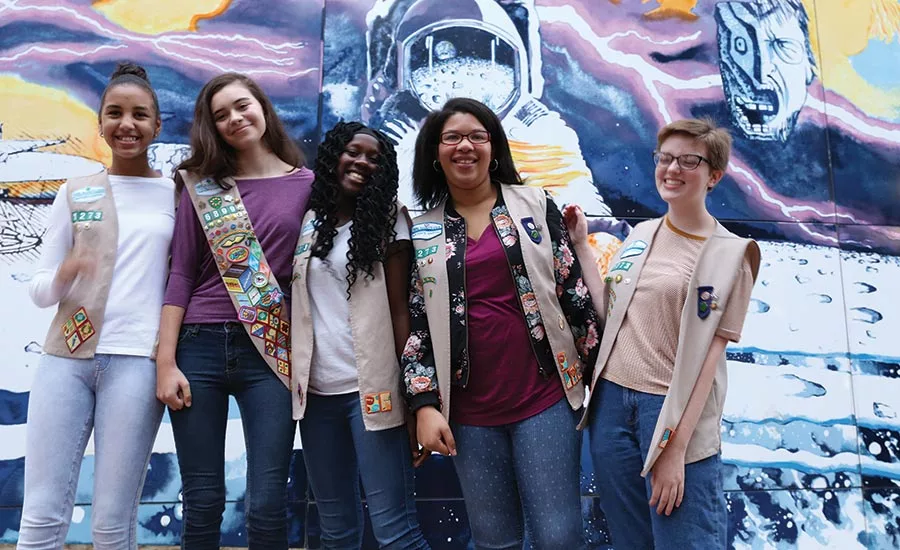The Next Generation of White Hat Hackers?


It’s the time of the year when Girl Scouts knock on our doors and sell their infamous and delicious cookies: Samoas, Tagalongs, Do-si-dos, Thanks-A-Lot and Thin Mints (my family’s personal favorite).
The organization is also known for acts of community service, and many accomplished alums are proof that Girl Scouts works. From astronaut Jan Davis and award-winning entertainer Queen Latifah to journalist powerhouse Katie Couric and civil rights activist Dolores Huerta – Girl Scout alums rise to the top of all fields.
This year, though, in addition to selling cookies, the organization, with Hewlett Packard Enterprise, is launching a new type of community service work: a program to ensure cyber safety and to assist with the cybersecurity workforce shortage.
As children gain online access earlier and earlier, they are increasingly vulnerable to damaging online behaviors and privacy risks, including social engineering, cyberbullying and exposure to malicious actors and cybercrime. Today, the average child receives their first smartphone at 10.3 years old (or younger), and 39 percent of children create their first social media account at 11.4 years. Yet many children lack the cybersecurity knowledge they need to protect themselves, particularly as they enter their teenage years and navigate the digital landscape more independently. For example, says the Girl Scouts organization:
- Only 44 percent of young people use a password on their mobile devices. Twenty-nine percent of pre-teens and teens know other people’s online passwords.
- Only 61 percent of teens and tweens use privacy settings on social media sites. Thirty percent have posted their phone number online, and 14 percent have posted their home addresses online. Additionally, 52 percent allow location sharing on apps indiscriminately.
- Eighty percent of youth have witnessed cyberbullying, but 25 percent report they would not know what to do if harassed or bullied online.
- Twenty-seven percent of youth would be willing to meet or have already met up with someone in-person who they first met online.
- Eighty-six percent of girls claim to be able to conduct online chats without their parents’ knowledge, and 69 percent of teens regularly receive online communications from strangers without telling parents or guardians.
- Ninety-four percent of parents believe they know what their children are doing online, but nearly 70 percent of pre-teens admit to hiding online activities.
The program will begin with Girl Scouts Nation’s Capital that serves the Greater Washington Region, including Washington, D.C., Virginia, West Virginia and Maryland. It will help girls safely and defensively navigate the internet, with specific best practices across four key domains: personal information and digital footprint, online safety, privacy and security and cyberbullying.
The program will use an educational online game, called Cyber Squad, to teach girls cybersecurity literacy via an interactive, narrative format that takes players through real-life scenarios and simulates the consequences of both risky and safe online behaviors. Girls who complete the program and game will receive a patch to display on their uniforms/vests certifying their newfound cybersecurity knowledge.
Designed by game studio Romero Games, Cyber Squad simulates cybersecurity issues such as phishing, cyberbullying and online safety through a role-playing interface:
- Simulating Real-Life Cyber Situations: The game places players and their avatars in real-life social and digital situations with online safety and privacy concerns. Role-playing a main female character, players are asked to assess the risks of the scenarios and decide on their avatar’s next steps in the storyline.
- Risks & Rewards: As a result of their decisions, the players then experience either positive or negative outcomes of their choices. They are rewarded for safe decisions, and conversely, witness how risky choices unfold in the storyline and impact their avatar and her group of friends whether online, at school or home.
- Friendly Competition: Cyber Squad comes with trivia features to quiz players on their earned cybersecurity knowledge, allowing them to compete against other players.
The second part of the program, the cybersecurity patch, involves a curriculum with a long-term goal to bring 2.5 million girls into the STEM pipeline by 2025. It incorporates dozens of new technology and science-focused badges and projects. Already, 77 percent of Girl Scouts say that because of the curriculum, they are considering careers in technology.
While not nearly as sweet as Thin Mints, this program has the capability to provide young girls with crucial cybersecurity skills and knowledge, in addition to a future career in cybersecurity. As a mother of two girls, I applaud this critical initiative to create basic cybersecurity awareness at a young age and to place it at the same level as safety skills are in the physical world.
Looking for a reprint of this article?
From high-res PDFs to custom plaques, order your copy today!




